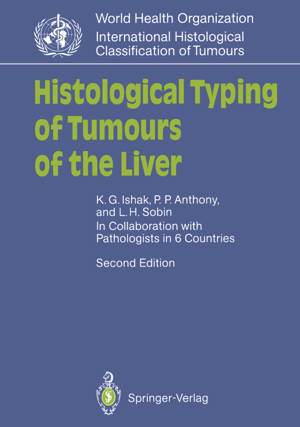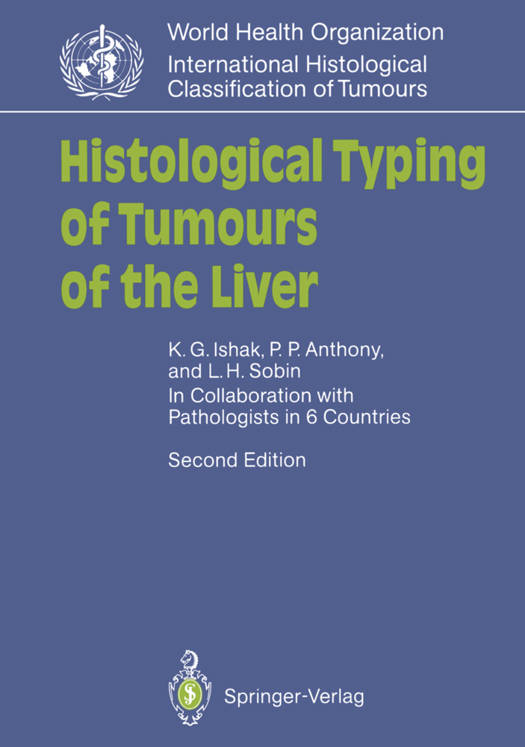
- Afhalen na 1 uur in een winkel met voorraad
- Gratis thuislevering in België vanaf € 30
- Ruim aanbod met 7 miljoen producten
- Afhalen na 1 uur in een winkel met voorraad
- Gratis thuislevering in België vanaf € 30
- Ruim aanbod met 7 miljoen producten
Zoeken
Histological Typing of Tumours of the Liver
Ed.: World Health Organization (WHO)
Kamal G Ishak, Peter P Anthony, Leslie H Sobin
€ 52,95
+ 105 punten
Omschrijving
This is a classification of tumours and tumour-like lesions of the liver. It is based primarily on the microscopic characteristics of the tumours, and is therefore concerned with morphologically identi fiable cell types and histological patterns. The haematoxylin- and eosin-stained section remains the mainstay of morphological diag nosis, but special histochemical stains are often helpful and have been referred to in the explanatory notes. Readers interested in specific special stains mentioned in the text should consult Labora tory Methods in Histotechnology of the Armed Forces Institute of .Pathology, Washington, D. c., USA. 1 The results of immunohisto chemical methods for identifying various tumour "markers" have also been noted whenever indicated. The present classification incorporates all the previously classi fied tumours, but also includes several new lesions, viz. biliary papil lomatosis, the fibrolamellar variant of hepatocellular carcinoma and epithelioid haemangioendothelioma. Several subtypes of hepato blastoma are mentioned. A serous type of bile duct cystadenoma is described. The section on tumour-like lesions has been expanded to include focal fatty change and inflammatory pseudotumour. The section on adenomatous hyperplasia, including macroregenerative nodules, has been amplified. The number of photomicrographs has been increased from the original 56 to 150. Unlike the first edition, the photomicrographs in the second edition are mostly black and white. All are new and were taken of representative cases on file at the Armed Forces Institute of Pathology."
Specificaties
Betrokkenen
- Auteur(s):
- Uitgeverij:
Inhoud
- Aantal bladzijden:
- 125
- Taal:
- Engels
- Reeks:
Eigenschappen
- Productcode (EAN):
- 9783540581543
- Verschijningsdatum:
- 16/09/1994
- Uitvoering:
- Paperback
- Formaat:
- Trade paperback (VS)
- Afmetingen:
- 173 mm x 242 mm
- Gewicht:
- 254 g

Alleen bij Standaard Boekhandel
+ 105 punten op je klantenkaart van Standaard Boekhandel
Beoordelingen
We publiceren alleen reviews die voldoen aan de voorwaarden voor reviews. Bekijk onze voorwaarden voor reviews.











